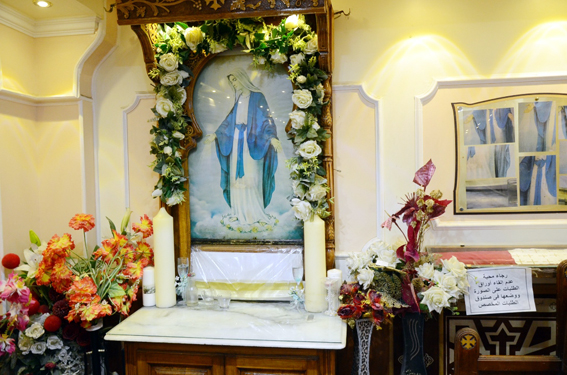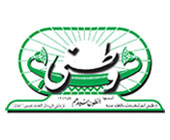Watani’s issue of 30 April carried a story titled “Black Cleopatra” that covered the controversy around the Netflix documentary on Queen Cleopatra, the last of the Greek Ptolemaic Dynasty which ruled Egypt from the outset of the 4th century BC to 30BC. The Netflix show cast a biracial actress in the role of Cleopatra, depicting a dark-skinned queen with African features. This raised heated criticism in Egyptian circles, with conspiracy claims of falsifying history and calls to ban the screening of the show in Egypt.
The criticism centred on a number of points. Egyptologist and former State Minister of Antiquities Zahi Hawwas said it was not about colour or racism, it was about falsifying historical facts. Egyptologist Wassim al-Sisi said the falsity was created and was being propagated by the Afrocentric movement of North American people of colour. Film critic Tareq al-Shinnawi said the issue was not that of skin colour, but was that of disregarding reality.
I contemplated Watani’s stance on this issue; it obviously sided with the view that Netflix was involved in a conspiracy to disfigure part of Egypt’s history in an intentional attempt at historical appropriation for the benefit of African history. But I thought this was an exaggeration. Admittedly, Netflix committed an error where historical accuracy was concerned; Queen Cleopatra should never have been depicted as black. Had the film not been categorised as a documentary, would it not have warranted a calmer look and objective discussion that would leave a wider space for artistic licence, before pronouncing judgemental verdicts? I believe that the criteria for assessing creative, artistic works on all levels provide for forms of diversity and departure from rigidity so as not to hamper the artist’s freedom to create.
In this regard, it may be a good opportunity to cite an example of works that have greatly interested me, and which I was thankfully able to grasp and appreciate without giving way to feelings of rejection or resentment. I speak of the large space of diversity and variety displayed in icons of Madonna and Child.
As children, we were first introduced to the Madonna boasting European features as depicted by famous western classic artists. Yet as we grew and our vision widened to include other depictions of the Madonna and Child, we discovered a wealth of variations of depictions that were the fruit of works done in different times and places. Together, they represented a vast space of artistic expression that embodied the realities of faith adapted by artists to specific places and times. For me, this represented artistic wealth not conspiracy. I will cite here a few examples of such works.
- The icon at al-Ezbawiya church in Cairo, that depicts the Madonna and the Child with Hebrew features.
- Icon of the Flight into Egypt as depicted by Coptic artists, bearing the features of the land of Egypt and the Nile.
- Icon of the Flight into Egypt as depicted by contemporary Coptic artists, bearing rural Egyptian features.
- Icon of Jesus as a young boy with St Mary and St Joseph, bearing Middle Eastern features.
- Icon of the Child Jesus with Mary His mother, bearing features of Asia Minor and the Syriac Church of Antioch.
- Icon of the Nativity depicting Baby Jesus and St Mary with European features.
- Icon of the Annunciation with Asiatic features.
- Icon of the Madonna and Child bearing Greek features.
- Icon from the 19th century depicting the most holy Virgin Mother of God with the Child Jesus Christ; on her right is St Elizabeth with her child John [the Baptist], and on her left is Salome with her child John the Beloved. All bear features of Asia Minor.
- Icon of the Child Jesus with Mary His Mother before the priests in the temple; the icon commemorates the Feast of the Circumcision. The features are of Asia Minor.
- Icon of the wedding at Cana of Galilee with Jesus Christ and the Holy Virgin depicted with Coptic features.
- Icon of the wedding at Cana of Galilee with Jesus Christ, the Holy Virgin, the guests at the wedding, and the servants, all depicted with Greek features.
- Icon of the Holy Virgin and the disciples, with the Resurrected Jesus Christ in their midst, all bearing Greek features.
- Russian icon of the Madonna and Child in Russian features.
- Icon of the Madonna and Child painted with classic Roman features.
- Icon of Baby Jesus and the Holy Virgin with the Wise Men presenting their gifts; all have features of Asia Minor.
- Icon of the Wise Men following the star, bearing Arab Bedouin features.
- Icon of the passing of St Joseph, with the Holy Virgin and 16-year-old Jesus beside him, bearing Hebrew features.
- Nativity icon featuring Southeast Asia features.
- Icon of Madonna and Child in black African features.
- Icon of Madonna and Child in Eskimo features.
I see these works as reflecting not a conspiracy but a wealth of diversity in space and time. But then, no claims were ever made that any of these works was documentary in character.
Watani International
5 May 2023










